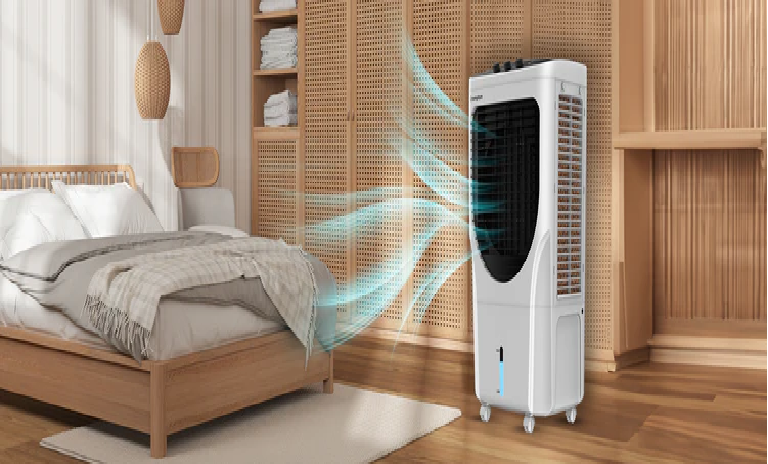A desert cooler, also known as an evaporative cooler, works better on a hot, dry day because of the way it cools the air using the natural process of evaporation. Here’s why it cools more effectively in such conditions:
1. Evaporation Efficiency
A desert cooler works by drawing hot air through water-soaked pads, causing the water to evaporate. When water evaporates, it absorbs heat from the surrounding air, effectively lowering the air temperature. The efficiency of this cooling process depends on how much moisture the air can absorb.
On a hot, dry day, the air has low humidity, meaning it can easily absorb more water vapor. The drier the air, the greater the evaporation rate, resulting in more cooling. In contrast, on a humid day, the air is already saturated with moisture, reducing its capacity to absorb more water, which makes the cooling effect much less effective.
2. Greater Temperature Drop
In dry conditions, the temperature difference between the hot, dry air and the cool, moist air produced by the cooler is more significant. This larger temperature gradient enhances the cooling effect, providing a greater feeling of comfort. The lower humidity levels allow the air from the cooler to be cooler and more refreshing compared to when the humidity is high.
3. Increased Airflow and Comfort
On a hot day, the cooler’s fan draws in large amounts of warm air, which passes through the wet cooling pads. As the warm, dry air passes over the pads, the evaporating water cools it, and the fan then blows this cooled air into the room. In dry conditions, this process can lead to a significant reduction in temperature and increased comfort.
Conclusion
A desert cooler cools better on a hot, dry day because the process of evaporation, which is at the core of its cooling mechanism, works most effectively when the air is hot and has low humidity. The greater the ability of the air to absorb moisture, the more efficient the cooling process will be, resulting in a more comfortable and refreshing environment.





